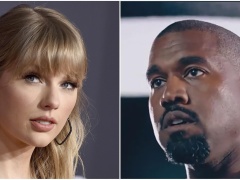
J Dilla — a.k.a Jay Dee, a.k.a. James Dewitt Yancey —was a pioneering hip-hop producer who never worked on a “hit” record, although his discography includes collaborations with or remixes of songs by greats like D’Angelo, A Tribe Called Quest, the Roots, Common, Busta Rhymes, the Pharcyde and many others. He died in 2006 of a rare blood disease at the age of just 32, with few except musicians and dedicated hip-hop fans aware of the pioneering work he had done.
Yet in the years since his death, awareness of his brilliance and his innovations with rhythm and production — which often sounded like random accidents but are acknowledged by many musicians as genius — has spread dramatically.Questlove, one of the first and certainly the most vocal of his disciples, says Dilla’s work “was so perfectly imperfect that it redefined the way I thought about art.” Veteran writer and documentarian Dream Hampton calls him the greatest hip-hop producer of all time, as do many others. And Dan Charnas, a longtime hip-hop writer (best known for his definitive history of the hip-hop business, “The Big Payback,” and as executive producer and cocreator of the VH1 series “The Breaks”) and associate professor at New York University’s Clive Davis Institute of Recorded Music, not only teaches regular classes on his work, he’s dedicated four years of his life to writing a 450-page tome called “Dilla Time.”
It’s no ordinary book: subtitled “The Life and Afterlife of J Dilla, the Hip-Hop Producer Who Reinvented Rhythm,” it’s equal parts biography, musical analysis and cultural history delving deep not only into Dilla’s history and music but also into the histories of rhythm and his hometown of Detroit. The three elements even come together in a mind-melting chapter that compares Detroit’s street plan with rhythm theory.
Charnas explains that, and most of the above, below, and (with helpful sound clips) in this twitter thread:
Some of you have seen this symbol on my Twitter page, and on the Dilla Time website. ⁰⁰On the penultimate eve of the release of Dilla Time, it’s time to talk about The Triptych, and what it means… ⁰
THREAD>>> pic.twitter/MkNqqn2Qg2
— Dan Charnas (@dancharnas) January 30, 2022
You’ve written a book about J Dilla with the depth and scope of histories of Mozart or Bob Dylan. Why him?
I guess the implication is that he is as important as a Mozart or a Louis Artmstrong or a James Brown — and I don’t mean to make any comparisons that aren’t germane, although he actually has been called “the Mozart of Hip-Hop.” I don’t if that’s the best comparison, but I’m saying his innovations are of a level of once-every-100-years.
When I explain it, I say that in the pop music of the last 100 years, we’ve had essentially two timepieces: We feel beats evenly, which is the European tradition, and we feel them unevenly, which is an American, or more specifically, an African-American tradition. What J Dilla did for the first time — in 1998 in Detroit — was to collide those two time fields and put them in conflict with each other, giving us that lurching feeling in a way that was intentional and deliberate.
All that wouldn’t matter if the next thing hadn’t happened, which was musicians, both electronic and traditional, responding to it. Within a few years of his innovation, you had D’Angelo’s “Voodoo” album, you had Michael Jackson and Brandy on the pop and R&B charts with songs in Dilla time, and obviously into jazz with people like Robert Glasper and Jason Moran — and by the mid-2010s, entire albums exploring this time field by Hiatus Kaiyote and Kendrick Lamar. And now it’s pervasive: Moran says he’ll walk into jazz conservatories and they use Dilla’s name like they’d use [legendary jazz drummer] Elvin Jones’ name.
But also, I worried about him and the innovations he pioneered becoming a footnote; even people who loved him were not able to muster the sort of language that I thought was needed. I have to say that [Questlove] was my north star in this endeavor. He was the first person to argue for the musical significance of Dilla when no one wanted to hear it.
Was it difficult to find a publisher?
It wasn’t easy! But I very much lucked out that Sean McDonald at MCD Books really saw this project and took it seriously; Danny Vazquez, who’s no longer with the company, was also responsible for bringing it in. It was a hard book to write and it could have been very hard to read, and I think they helped encourage my better angels.
Also, the way I sold it was as “a little science book about music.” I was thinking about something like a Stephen Hawking book, a slim volume on the science of the music. But once I started reporting, that impulse took over, and I had 200 interviews. There was so much story that it became almost like a mini “Big Payback,” except about music innovation and how we pass ideas through generations. It’s a biography, but it’s also a biography of Detroit and rhythm and a particular moment in hip-hop and how neo-soul grew out of it. There’s more story in Dilla and “Dilla World” than I ever imagined.
So how does a Detroit street map fit into a book about music?
Well, it’s a metaphor: Detroit is actually laid out as a polyrhythm —conflicting grids of twos and threes — and it’s also offset in the way that Dilla would offset his rhythms. So for me Detroit becomes the metaphor but there’s also a lot of social and cultural stuff that informs that grid. Honestly, I wasn’t sure whether that chapter was going to work, and it’s funny that that’s the one that people are talking about the most.
What’s next?
I have a certain track record in television so I’m thinking about something there. I’m also thinking very seriously about a podcast, and more books because I’m ready — just maybe not a 400-page book! (laughter)
Charnas is taking part in four talks related to “Dilla Time” between Feb. 7 and 11, head here for details. ‘Dilla Time: The Life and Afterlife of J Dilla, the Hip-Hop Producer Who Reinvented Rhythm’ is out today (Feb. 1) on MCD Books.






